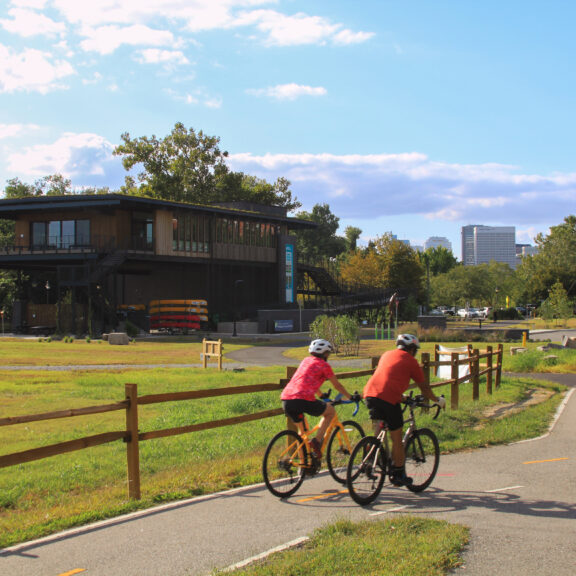With the last leg of our Dallas to Arizona Run & Walk in view and summer in full stride, it’s a perfect time for Richmonders and visitors to take a daytime detour to beautiful Belle Isle to saunter, sprint, or something in between!

As my peer competitors chase down their last few miles in our companywide Dallas to Arizona Run & Walk competition, I shook things up to get in my own steps by heading down to one of Richmond’s most unique parks, Belle Isle! I enjoyed a breath of fresh air through 1.5 miles of beautiful riverside forestry and took in a few notes about Timmons Group’s contributions to the park along the way. Among many services we offered to the park, our teams enhanced the trail’s walkability with signage, ADA-compliant ramps, and mitigation of historic structures.
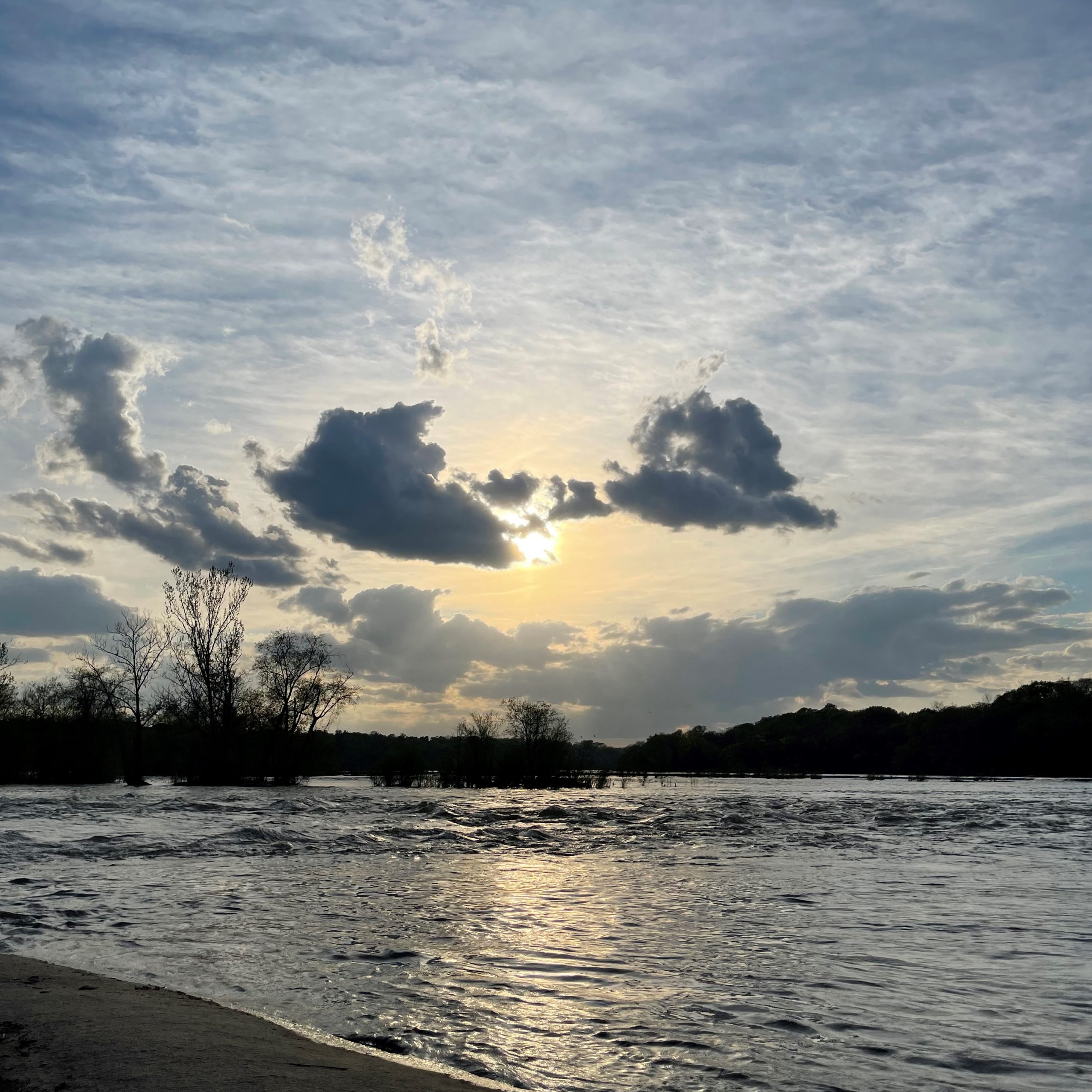
Belle Isle is a stunning 54 acres of urban wilderness. Weathered by flooding, shaped by industry, and preserved by modern engineering, this unique city-bound island gives outdoor lovers a break from the typical cityscape as they are taken down a tree-shaded trail that winds through centuries of Richmond history.
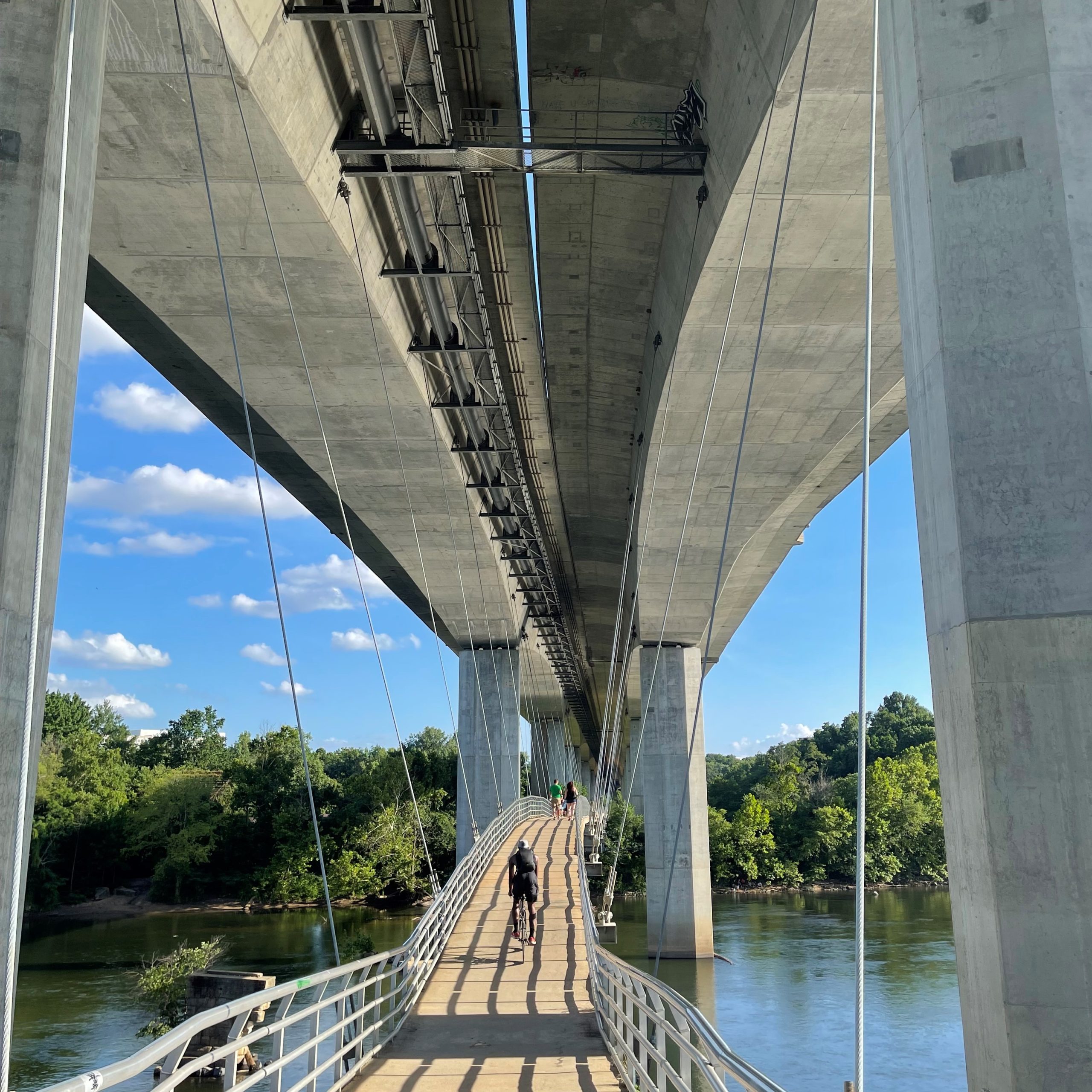
As the former hydroelectric heart of Richmond, Belle Isle can be reached by two different routes: The more adventurous southern approach will require rambling over rocks and river while the more accessible north bank takes visitors across a suspension bridge beneath the six-lane Lee Memorial Bridge. I chose the less demanding route for this daytrip, but I encourage all those visiting Belle Isle to enjoy either trail for a variety of unique experiences.
As I crossed the footbridge to access the trail, I witnessed an unparalleled panorama of the river with the majestic Hollywood Rapids taking center-stage. When I neared the side of the footpath, Belle Isle slowly began to reveal itself from behind a curtain of foliage, opening into a natural courtyard that serves as a preview of the park. Visible from the path are a mountain bike track and a path that winds through a leafy archway into the forested core of Belle Isle.
Immediately after the bridge, the first of many signs designed by Timmons Group greeted me with a map of the park, and just a few feet to the right, a second sign introduced the local history. Our Landscape Architecture team collaborated with city writers to create the signs that can be found along the trail and throughout Belle Isle. The team consulted with park and city staff to establish design standards that will allow the signs to withstand the elements for years to come.
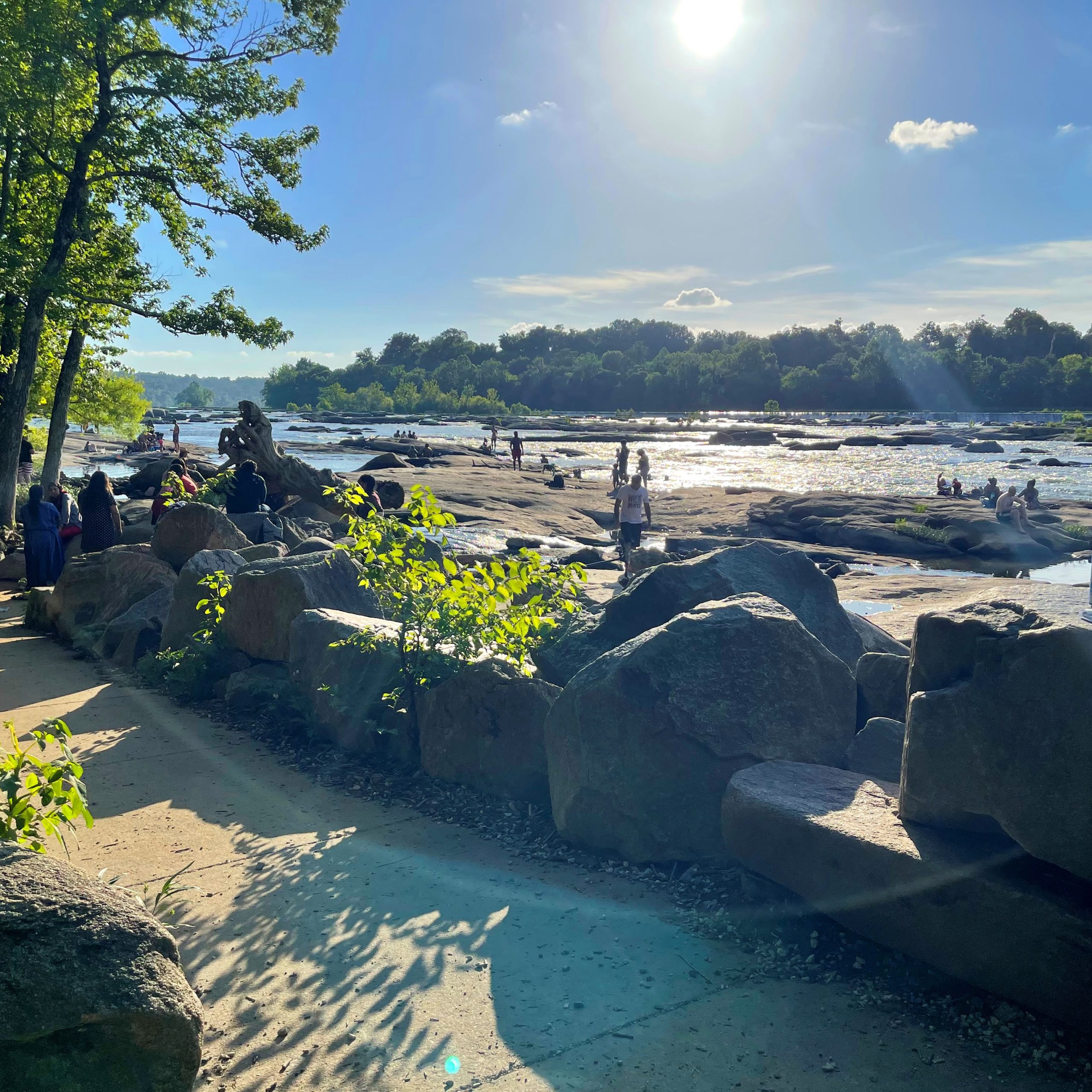
As I followed Timmons Group’s signs throughout the trail, I encountered the first of several stone beaches at the Hollywood Rapids. To create a safe approach to the rapids for all island visitors, Timmons Group’s Landscape Architecture team designed a wheelchair accessible and ADA-compliant ramp. By using native stone and the natural flow of the river, the team created a path that seamlessly integrates into the existing formations along the shore. Their ramp design coincides with the direction of water flow during flood times, minimizing environmental impact and allowing it to withstand regular flooding and constant traffic for over a decade.
Scott Wiley, Principal at the firm and leader of our Landscape Architecture group, gave me additional insight into how this is possible. He said that one of the main things his team took into consideration was to assure that the construction would withstand decades of flooding and turbid water. “What most people don’t know about the ramp and those rocks is that they are actually structurally pinned down with steel to a foundation or natural rock bed below so even the swiftest of floodwaters won’t destroy the access,” he told me.
Another bend in the trail brought me into the heart of Belle Isle. As the sky opens up and the trail returns to the shadow of the Lee Bridge, the remaining wall of the historic plant’s iron mill can be found. This facility manufactured nails, wire, and horseshoes, among other metal items that were largely used throughout the South.
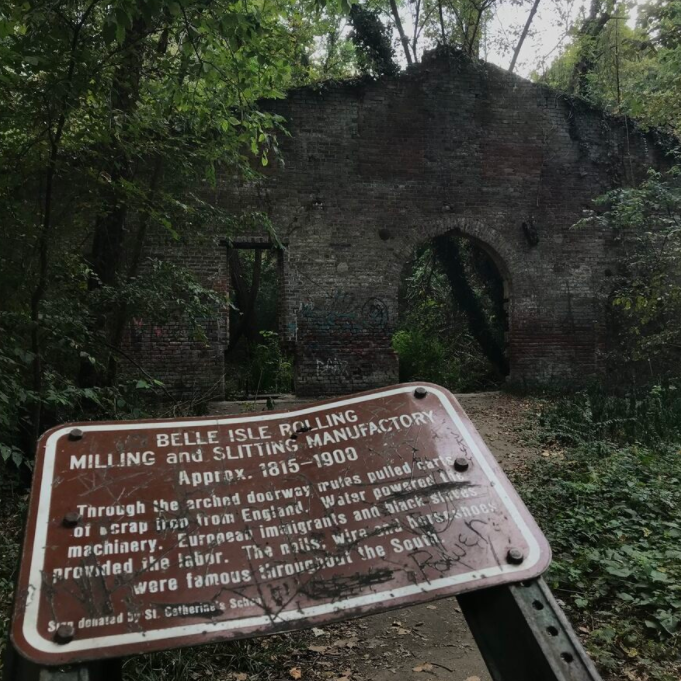
Text: “Belle Isle Rolling, Milling and Slitting Manufactory Approx. 1815-1900 – Through the arched doorway mules pulled carts of scrap iron from England. Water powered the machinery. European immigrants and black slaves provided the labor. The nails, wire and horseshoes were famous throughout the south.”
To prevent the wall from collapsing and losing a critical piece of Richmond’s Civil War history, Timmons Group’s structural engineers designed a stabilization plan to mitigate potential future damage. A steel I-beam support structure will parallel the rear of the façade and will tie into the wall in several locations, along with minor shoring work and other stabilization practices.
As I continued along Belle Isle’s grassy fields on the final stretch of the trail, I came across the remains of a Civil War-era armored storage shed situated just outside the forest’s borders, another example of Timmons Group’s collaboration in the restoration of Belle Isle. The Timmons Group structural team stepped in to stabilize the remaining parts of the historic building. By installing metal braces and capping the remaining four walls, our team not only renewed, but also reinforced the durability of the aging stone structure.
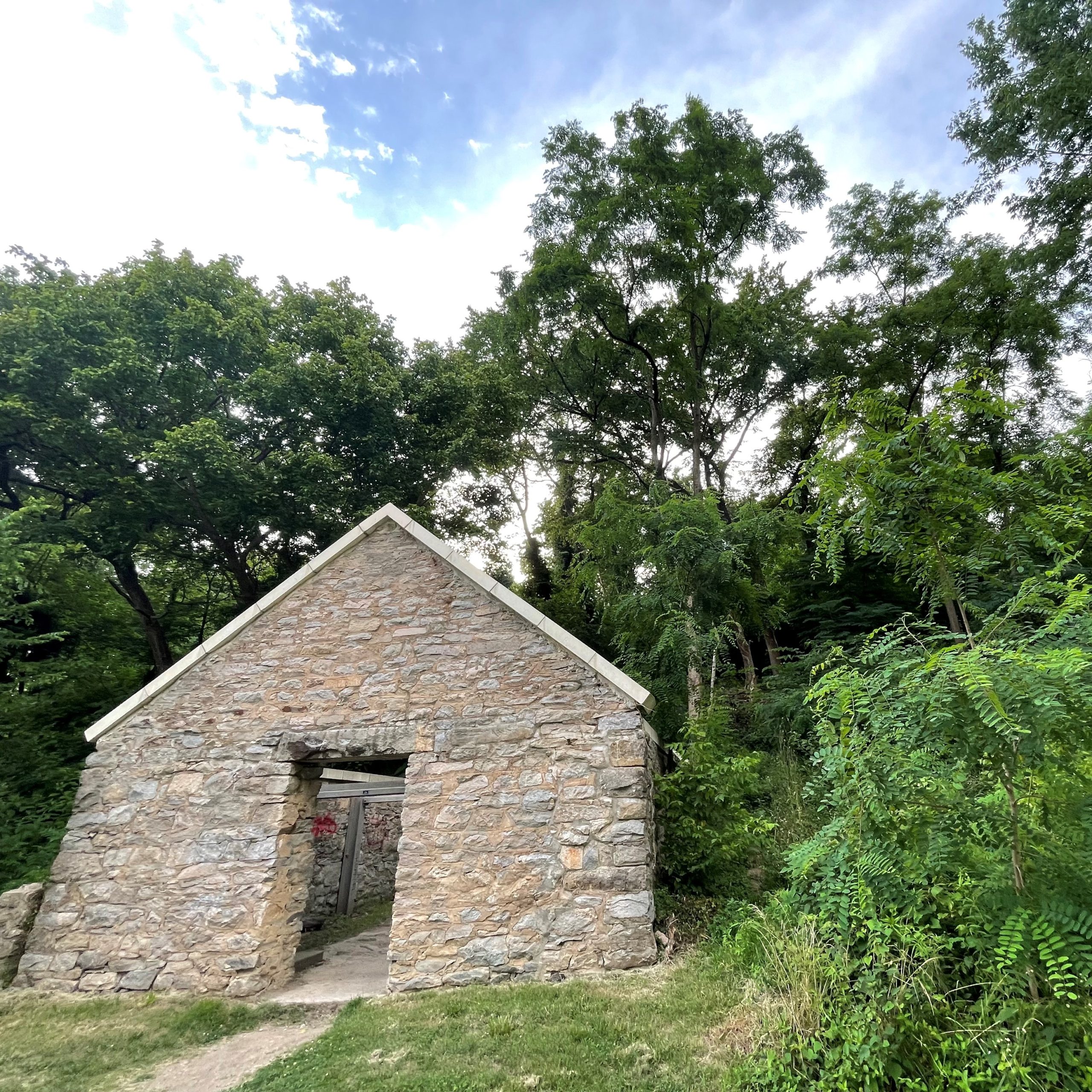
Belle Isle truly is a Richmond treasure that grows more valuable with each passing day. When visiting, I made sure to leave only footprints and take only pictures of these unique contributions that Timmons Group has made to Richmond’s beloved Belle Isle. I look forward to enjoying my time at Belle Isle again in the future, and I recommend that my companywide Run & Walk competitors do the same!

